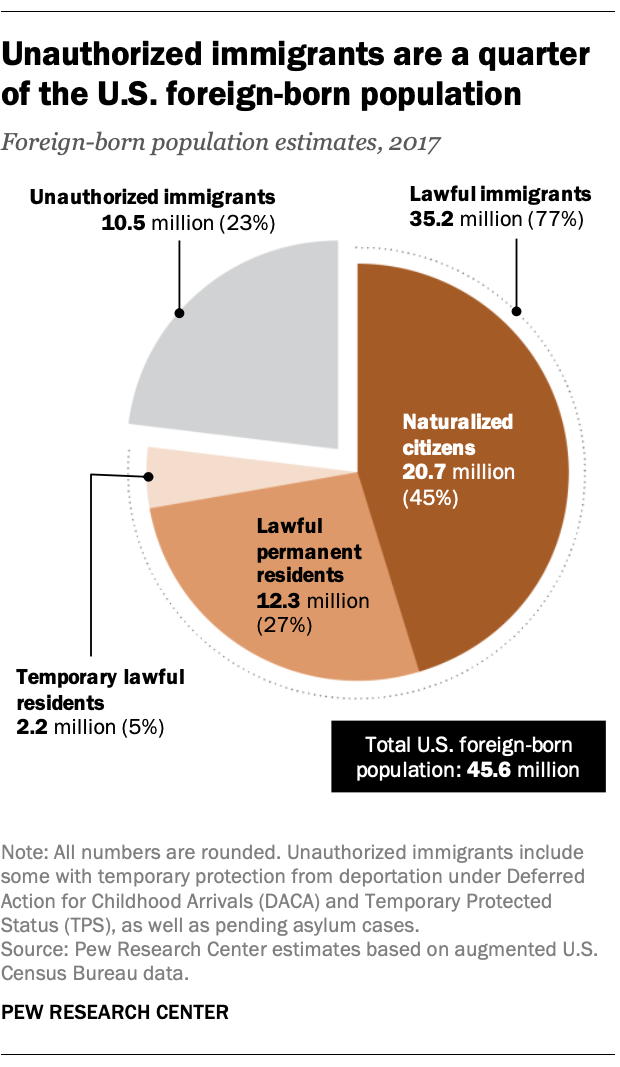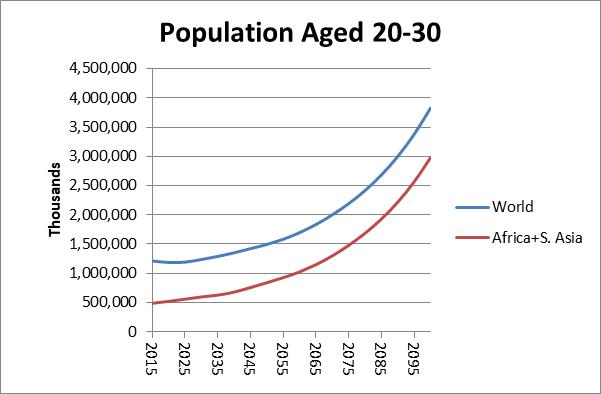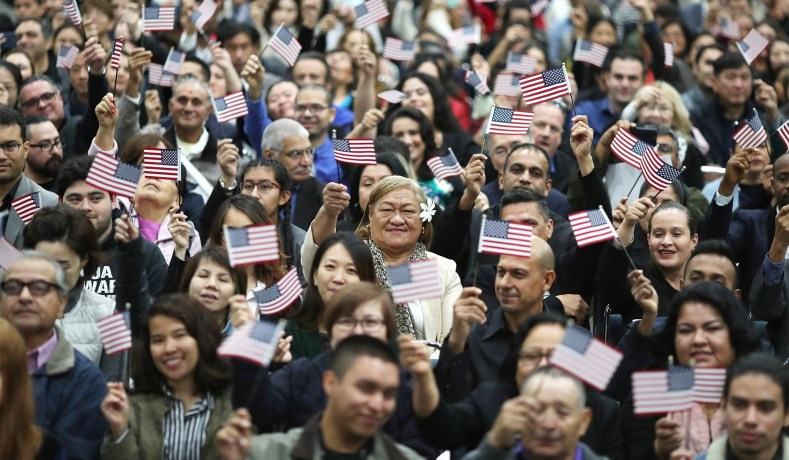
Fast Fact: Almost a quarter of the foreign born in the U.S.(2017) are illegal aliens – Pew Research Center

looking for a better life • news and pro-enforcement opinion
By D.A. King

By D.A. King

Jerry Kammer
July 15, 2019
Editor’s note: This post is an excerpt from a forthcoming Center for Immigration Studies book on the failure of the Immigration Reform and Control Act of 1986.]

Just before the 1996 presidential election, the Clinton White House held a press briefing to boast about record numbers of deportations of illegal immigrants. The principal spokesperson for the administration was Doris Meissner, Commissioner of the Immigration and Naturalization Service. “I am proud once again to announce that the Clinton administration’s determination to remove criminal aliens and other deportable aliens from the United States has produced record results,” said Meissner.
Meissner, a Clinton appointee, said 67,094 illegal immigrants – criminal and non-criminal – had been deported in the 1995 fiscal year. In a dutiful tribute to Clinton that echoed statements from the White House and the Justice Department, she contrasted his performance to that of his predecessors. “For too many years, under-enforcement of our nation’s immigration laws undermined their credibility,” she said. “But this administration’s unprecedented expansion of and support for strong but fair enforcement of immigration laws…is restoring that credibility.”…read the rest here.
By D.A. King

Washington Examiner
“As noted repeatedly in this space, voter fraud is very real, despite howls to the contrary by ideological leftists and their media echo chamber. As Hemingway reminds us, the willful blindness to voter registration problems conducive to fraud was a deliberate strategy of the Obama administration.” Here.
By D.A. King

From the Marietta Daily Journal
July 10, 2019
“A young girl was followed and molested outside her Marietta house on July 4 after watching fireworks at Ron Francis Park with her family, police say.
The 12-year-old has spoken publicly about the ordeal, telling media her attacker repeatedly tried to grab and kiss her until her 10-year-old brother scared the man off…” More here.

By D.A. King
Last month, the Guatemalan government participated in the “Encounter with Migrants 2017”, an event that aims to bring the Guatemalan migrant community in the United States and Guatemalan entrepreneurs closer together in order to promote investment, boost productivity of remittances, and curb emigration. During the event, Vice Minister of Foreign Affairs Carlos Martínez noted that the majority of Guatemalans migrate to the United States for better economic opportunities.
According to the “Survey on International Migration of Guatemalans and Remittances 2016”, by the International Organization for Migration (IOM), 91.1 percent of Guatemalans emigrate to the United States for economic reasons. Per the report, 56.8 percent of Guatemalans migrate in search of better employment, 32.9 percent to improve their income, 1.2 percent to buy a home, and 0.1 percent to open businesses. (These add up to only 91 percent, though the survey report says 91.1 percent, presumably due to rounding.) Moreover, IOM found that 3.7 percent migrate for family reunification. Meanwhile, only 0.3 percent migrate due to violence; 0.2 percent migrate as a result of extortion; and 0.2 migrate because of gang problems. Read the rest here.
By D.A. King

“According to the Office of the UN High Commissioner for Refugees, 68 million people around the world are or at risk of becoming refugees. The migration of a few million people has already turned the European Union inside out and motivated the election of an America-first presidency. What we have seen so far, though, is nothing compared to what is to come.” More here.
By D.A. King

“There are always far more qualified applicants than HUD can serve at its existing funding level, but if the regulatory impact analysis (RIA) for a recent HUD proposed rule is to be believed, perhaps $210 million, or about 1 percent of program funds, are directed to “mixed” households with at least one individual who isn’t a United States citizen or eligible resident alien. The amount of HUD money that HUD itself estimates is going to 31,811 ineligible (“likely illegal resident”) individuals is $60.4 million each year.” Here.
By D.A. King

By Steven Camarota
Its effects on programs like Social Security are tiny.
We hear it all the time. During the recent primary debate, Joe Biden said illegal immigrants “increased the lifespan of Social Security.” America must have large numbers of immigrants to “rebuild the demographic pyramid,” in the words of Jeb Bush.
To be sure, Americans have had small families for quite some time, and life expediency has increased. Our population is aging. But there is a significant amount of research on how much immigration can offset population aging in low-fertility countries such as the United States, and the answer is clear — not much.
In a 1992 article in Demography, economist Carl Schmertmann explained that, mathematically, “Constant inflows of immigrants, even at relatively young ages, do not necessarily rejuvenate low-fertility populations. In fact, immigration may even contribute to population aging.” After reviewing population projections, the former chair of Princeton’s sociology department and the director of its graduate population-studies program, Thomas Espenshade, observed:
It becomes apparent that the effect of alternative immigration levels on population age structure is small, unless we are willing to entertain a volume of U.S. immigration of historic proportion. . . . Immigration is a clumsy and unrealistic policy alternative to offset a shortage of domestic labor or to correct a perceived imbalance in the pensioner/worker ratio in the United States.
After looking at all the population projections prepared by the United Nations, Oxford demographer David Coleman has concluded, “There are no feasible migration solutions to the age-structure change and its effects on social security.” Coleman and others have pointed out that immigration can prevent population decline — that is, it can add a lot of people to the country — but it does not significantly change the age structure in the way that many immigration advocates seem to imagine. If we wanted to use immigration to offset population aging, the level necessary would have to be truly enormous.
A recent paper I coauthored based on the most recent Census Bureau population projections examined the impact of immigration on the nation’s age structure. Assuming current levels of immigration continue, the latest projections indicate that the total U.S. population will reach 404 million in 2060 — 79 million larger than in 2017. Future immigrants and their descendants account for nearly all (75 million) of the increase. Under this scenario, 59 percent of the population will be working-age (16 to 64). By contrast, in a zero-immigration scenario, 57 percent of the population would be working-age in 2060. More realistically, if immigration were limited to half of the expected level, 58 percent would be working age…
By D.A. King

GALEO is a clear enemy of enforcement. John King is an active friend of GALEO. My own opinion of you as governor has been greatly and permanently diminished.”
A follow up to our recent column (Georgia Governor Appoints Replacement Insurance Commissioner With Ties to Anti-Enforcement Immigration Lobbying Group) alerting readers to Governor Brian “I have a big truck” Kemp’s choice for his appointment to state wide office as Insurance Commissioner.
We explained that the appointee, John King, is a friend of the notorious GALEO Corp. and speaker for least one fundraiser for that anti-enforcement group. The fact that Doraville Police Chief John King was helping GALEO while GALEO was smearing King’s fellow law enforcement officers – including several county sheriffs – with false accusations of “racial profiling” because they assisted in immigration enforcement seems to have been lost on Gov. Kemp.
In 2014 GALEO – with the help and friendship of Police Chief John King – boasted on it’s website of their role in convincing Fulton County to end cooperation with federal ICE agents on holding criminal illegal aliens. GALEO Executive Director Jerry Gonzalez put out a press release with the following statement:
On behalf of GALEO, I would like to commend Fulton County Commissioners’ leadership and resolution urging the Fulton County Sheriff to stop honoring the ICE hold requests in order to keep families together but to also enhance public safety. We urge the Fulton County Sheriff to move forward quickly and implement the recommendation.
Since Fulton County is the first jurisdiction in the state with such a recommendation, GALEO would also like to encourage other jurisdictions in the state to adopt similar policies and stop honoring the hold requests from ICE.”
The entire media release can be read here.
We think it is educational to share a few letters from Georgians that have been sent to Gov Kemp regarding his “historic” appointment of GALEO’s John King to constitutional office.
Here is a recent letter from Mr. Robert Trent, a retired federal immigration agent, to Kemp:
“June 17, 2019
Governor Kemp,
I am Robert M. Trent, Senior Special Agent, USINS (Ret.). My final assignment was at the U.S. Immigration Officers Academy, Federal Law Enforcement Training Center, Glynco, GA. . I served as the Assistant Director for Enforcement Training.
Having spent most of my life fighting for public safety through enforcement of our immigration laws, I am shocked and extremely disappointed to learn that in your recent appointment of John King to Insurance Commissioner, you have chosen to elevate a friend of the notorious GALEO organization to a position of power in our state government. John King has served as a valuable assistant in GALEO’s fundraising.
GALEO’s Executive Director, Jerry Gonzalez is giddy in his excitement over King’s appointment and boasting of the friendship and connection with your choice for an appointment to constitutional office. Like most conservatives, we expected to see this happen only after the Democrats gained control of our state government.
I have also just learned that you have lent your own prestige to a GALEO fundraiser with your attendance in the past.
GALEO is shamelessly dedicated to stopping enforcement of the immigration laws I swore to uphold and has a verified history of opposition to literally every tenant of commonsense policy that conservatives elected you to implement. If you have even mentioned illegal immigration since you took office it hasn’t filtered down to our attention here in South Georgia.
Like many of my friends and colleagues, I am outraged beyond the words I send you today. This appointment and your association with GALEO is a memorable mistake on your part and it is obviously far away from your campaign promises on illegal immigration in Georgia.
GALEO is a clear enemy of enforcement. John King is an active friend of GALEO. My own opinion of you as governor has been greatly and permanently diminished.
Robert M. Trent
Saint Mary’s, GA 31558″
Other letters to Kemp on the appointment, including from legal immigrants who do not share GALEO’s anti-borders views on immigration and enforcement can be seen on the Dustin Inman Society blog page here.
##
By D.A. King

“Meanwhile,… family members have made arrangements for Kathy Inman’s continued care through a home care provider, though they worry about the expense. Nationally known immigration activist Mary Ann Mendoza, who came to Cherokee County for the funeral and to visit Kathy Inman has set up a fundraising account that can assist in Inman’s care: DONATE HERE.
Staff
Friends and loved ones said goodbye Thursday to Billy Inman, a Woodstock man who became a determined foe of illegal immigration when his son was killed in a crash in 2000 in which the other driver was in the country illegally.
Inman died June 7, of an apparent heart attack, according to family members.
Billy and Kathy Inman, along with their 16-year-old son, Dustin were traveling together on June 16, 2000 when Gonzalo Harrell-Gonzalez, who was said to be traveling more than 60 mph, struck the family’s stopped vehicle at a traffic light in Ellijay. After being treated for his injuries at the hospital, Harrell-Gonzalez, a Mexican national who had been living in the U.S. illegally, reportedly fled to Mexico.
In 2000 neither Billy nor Kathy Inman were able to attend Dustin’s Inman’s funeral because they were recovering from severe injury. But Kathy Inman was able to attend her husband’s funeral last week.
“She is a strong woman who has been through literal hell. She is out of the hospital and was able to attend and speak at her husband’s funeral. In her tearful remarks, she said ‘I feel like God is mad at me…'” officials with Marietta-based The Dustin Inman Society said in a written message Monday.
“I lost my child and my husband because of this man,” Kathy Inman said in an interview Monday.
Following the crash, Inman became primary caregiver to his wife, who suffered a brain injury and other permanent effects from the crash. He also became a dogged advocate for justice for Dustin and immigration law reform.
Billy Inman found supporters for the cause in Georgia and in Washington, D.C.
When the White House established its Victims of Immigration Crime Engagement Office in April 2018, the Inmans were among the special guests. The following month, U.S. Rep. Barry Loudermilk, R-Cartersville, shared their story on the House floor.
“I was deeply saddened to learn of the passing of Billy Inman. Since meeting Billy and Kathy a few years ago, my team and I have gotten to know them well,” Loudermilk said. “Although Billy has gone on to a better place, we will continue our work to bring justice for Dustin and the family.”
Kathy Inman’s sister said Monday she has long admired her brother-in-law and his devotion to his wife.
While Billy Inman’s sudden death was painful, Kelley said she has faith he has been reunited with Dustin in heaven. “This is the first time in 19 years he got to spend Father’s Day with Dustin and that makes me happy,” she said.
Meanwhile, Kelley, family members have made arrangements for Kathy Inman’s continued care through a home care provider, though they worry about the expense. Nationally known immigration activist Mary Ann Mendoza, who came to Cherokee County for the funeral and to visit Kathy Inman has set up a fundraising account that can assist in Inman’s care: https://www.gofundme.com/kayckb-a-family-in-need
The entire news item can be read here.

Contact info for the Georgia delegation in Washington DC here. Just click on their name.